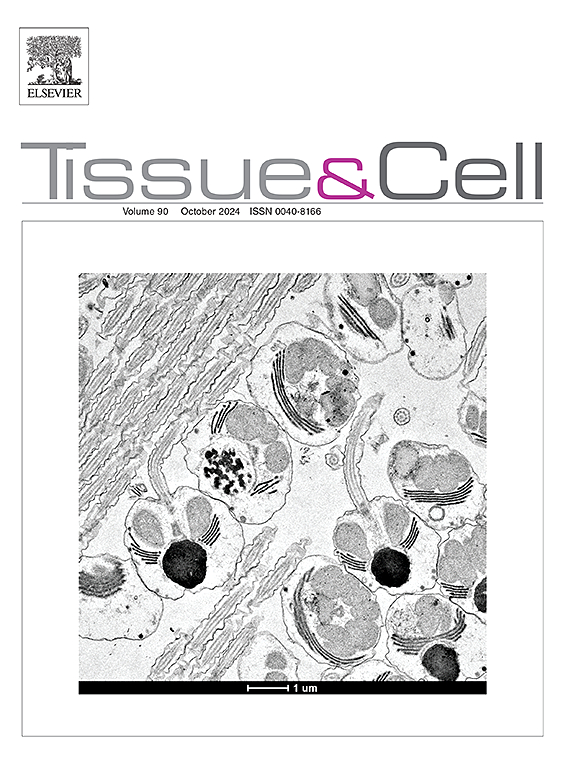IF 2.7
4区 生物学
Q1 ANATOMY & MORPHOLOGY
引用次数: 0
摘要
磷酸三钙(TCP)生物陶瓷已成为满足运动员骨折相关特殊要求的一种有前途的选择。人工神经网络(ANN)等先进的计算建模技术已被用于优化基于磷酸三钙的生物材料的配方、结构特性和植入策略。通过这种个性化方法,可以定制 TCP 植入物和支架,以满足运动员的特定生物力学和生物学要求,从而最大限度地提高骨再生成功的可能性,并及时重返赛场。基于 TCP 的生物材料的战略性应用与个性化计算建模相结合,有望彻底改变运动员骨折的治疗方法。本文研究了使用神经网络来理解孔隙率和骨生长等各种参数之间的复杂关系,以及它们对基于 TCP 的生物陶瓷的生物降解率、抗压强度和硬度的影响。利用线性回归分析验证了神经网络预测的准确性,证实了其在指导设计和优化这些生物材料以用于运动相关骨损伤方面的适用性。该研究开发了一个人工神经网络(ANN)模型,用于准确预测磷酸三钙(TCP)生物陶瓷的生物降解率、抗压强度和硬度与孔隙率和骨生长的关系。人工神经网络在预测这些关键生物陶瓷特性方面表现出很高的准确性。本文章由计算机程序翻译,如有差异,请以英文原文为准。
A new approach to bioceramics based on tissue reaction of tricalcium phosphate for biomedical and sport applications using machine learning modeling
Tricalcium phosphate (TCP) bioceramics have emerged as a promising option to meet the specific requirements associated with athlete bone fractures. Advanced computational modeling techniques, such as artificial neural networks (ANNs), have been leveraged to optimize the formulation, structural properties, and implantation strategies of TCP-based biomaterials. This personalized approach enables the tailoring of TCP implants and scaffolds to match the specific biomechanical and biological requirements of individual athletes, maximizing the potential for successful bone regeneration and a timely return to athletic competition. The strategic application of TCP-based biomaterials, combined with personalized computational modeling, holds great promise in revolutionizing the management of athlete bone fractures. This article investigates the use of an ANN to understand the complex relationships between various parameters, such as porosity and bone growth, and their effects on the biodegradation rate, compressive strength, and hardness of TCP-based bioceramics. The accuracy of the neural network's predictions was validated using linear regression analysis, confirming its applicability in guiding the design and optimization of these biomaterials for sports-related bone injury applications. The study developed an artificial neural network (ANN) model to accurately predict the biodegradation rate, compressive strength, and hardness of tricalcium phosphate (TCP) bioceramics as a function of porosity and bone growth. The ANN demonstrated high accuracy in forecasting these key bioceramic properties.
求助全文
通过发布文献求助,成功后即可免费获取论文全文。
去求助
来源期刊

Tissue & cell
医学-解剖学与形态学
CiteScore
3.90
自引率
0.00%
发文量
234
期刊介绍:
Tissue and Cell is devoted to original research on the organization of cells, subcellular and extracellular components at all levels, including the grouping and interrelations of cells in tissues and organs. The journal encourages submission of ultrastructural studies that provide novel insights into structure, function and physiology of cells and tissues, in health and disease. Bioengineering and stem cells studies focused on the description of morphological and/or histological data are also welcomed.
Studies investigating the effect of compounds and/or substances on structure of cells and tissues are generally outside the scope of this journal. For consideration, studies should contain a clear rationale on the use of (a) given substance(s), have a compelling morphological and structural focus and present novel incremental findings from previous literature.
 求助内容:
求助内容: 应助结果提醒方式:
应助结果提醒方式:


